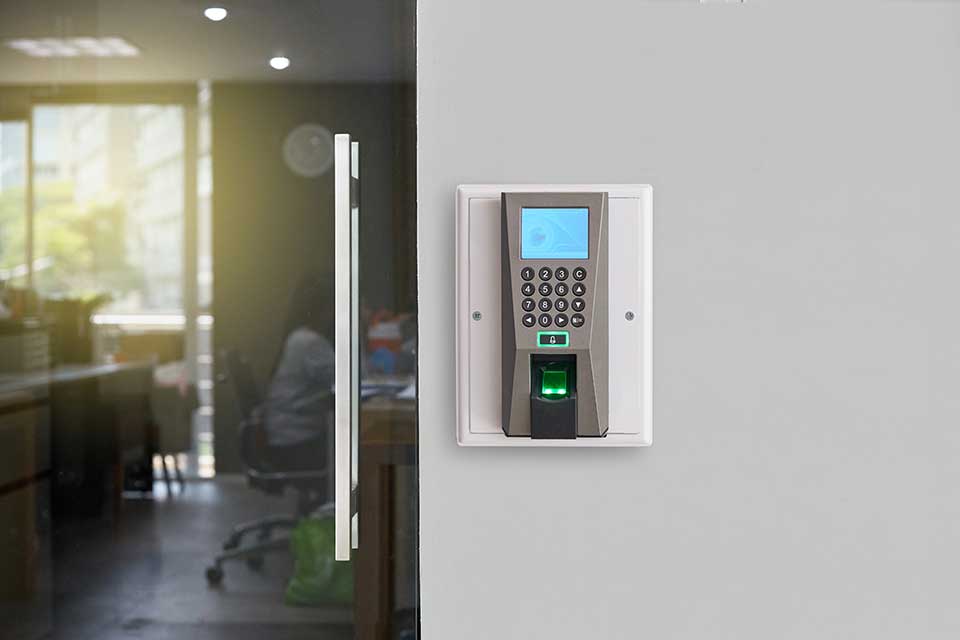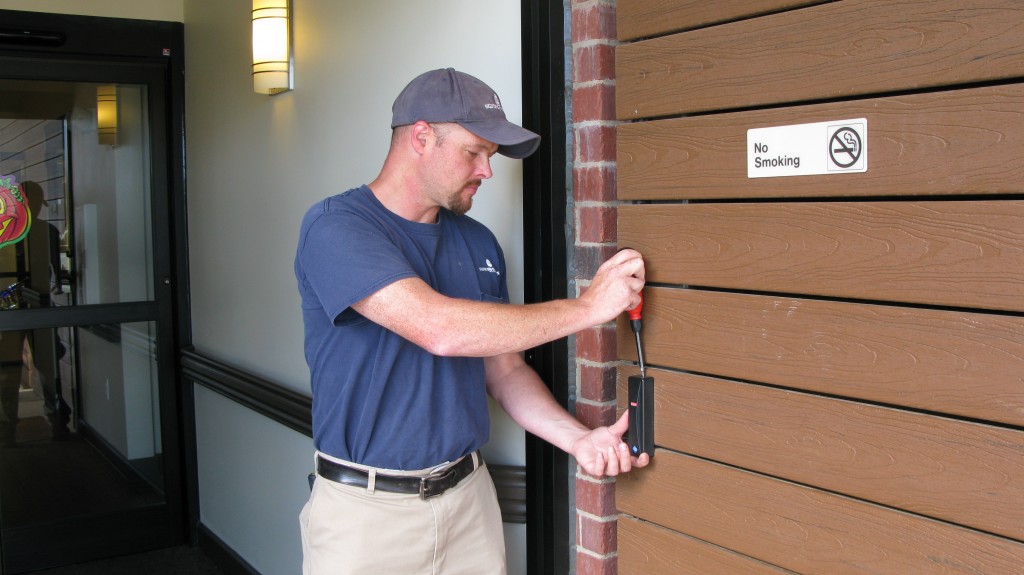In today’s world, where security and access management are paramount concerns, the installation of effective access control systems has become a crucial step in safeguarding both personal and commercial spaces. Whether you’re a homeowner seeking to enhance the protection of your property or a business owner aiming to control and monitor the flow of people within your premises, understanding the process of access control installation is essential for ensuring a seamless and efficient security solution.
In this comprehensive guide, we will delve into the intricacies of access control installation, equipping you with the knowledge and insights to navigate this vital security measure with confidence. From selecting the appropriate system to the step-by-step installation process, this article will provide you with a roadmap to securing your spaces and ensuring the safety and privacy of your valued assets.
Prepare to embark on a journey of securing your spaces through the seamless installation of an access control system.

Understanding Access Control Systems
Before embarking on the installation process, it’s crucial to familiarize yourself with the various components and functionalities of access control systems.
Types of Access Control Systems
Access control systems come in a range of technologies and configurations, each with its own unique features and benefits.
Card-Based Systems
These systems utilize access cards or key fobs to grant or deny entry, providing a convenient and secure method of access control.
Biometric Systems
Biometric access control systems rely on unique physical characteristics, such as fingerprints or facial recognition, to authenticate and authorize users.
Keypad-Based Systems
Keypad-based access control systems require users to enter a unique code or PIN to gain entry, offering an additional layer of security.
Key Components of an Access Control System
Regardless of the specific technology employed, access control systems generally consist of several key components that work together to provide a comprehensive security solution.
Access Readers and Sensors
These devices, installed at entry points, are responsible for identifying and verifying authorized users.
Control Panels and Interfaces
The control panel acts as the brain of the access control system, managing the flow of information and decision-making processes.
Locks and Door Hardware
The physical locks and door hardware are essential for physically restricting access to authorized individuals.
Considerations for Choosing an Access Control System
When selecting an access control system for your property or business, it’s important to consider a range of factors to ensure the solution aligns with your specific security needs and requirements.
Assessing Your Security Needs
Evaluate the unique security challenges and access management requirements of your specific environment.
Determining the Number of Entry Points
Identify the number of entry points that require access control, as this will influence the scale and complexity of the system.
Identifying User Groups and Access Levels
Understand the different user groups and their respective access requirements, as this will guide the configuration of your access control system.
Evaluating System Features and Capabilities
Carefully examine the features and capabilities offered by various access control systems to ensure they meet your needs.
Scalability and Expandability
Consider a system that can accommodate future growth and changes in your security requirements.
Reporting and Monitoring Capabilities
Prioritize access control systems with robust reporting and monitoring features to track and analyze user activity.
Considering Installation and Maintenance Requirements
The ease of installation and ongoing maintenance should also be factored into your decision-making process.
Compatibility with Existing Infrastructure
Ensure the access control system is compatible with your building’s existing electrical, network, and security infrastructure.
Availability of Technical Support
Assess the level of technical support and guidance available from the access control system provider.
The Access Control Installation Process
With a clear understanding of the access control system components and your specific requirements, it’s time to delve into the step-by-step installation process.
Site Evaluation and Planning
The first step in the installation process involves a thorough evaluation of the installation site and careful planning to ensure a seamless execution.
Mapping Entry Points and Access Zones
Identify and document all entry points and access zones that require access control coverage.
Determining Optimal Placement of Components
Collaborate with the installation team to determine the optimal placement of access readers, sensors, and door hardware.
System Hardware Installation
The physical installation of the access control system hardware is a crucial step in the overall process.
Mounting Access Readers and Sensors
Securely mount the access readers and sensors at the designated entry points, ensuring they are properly aligned and positioned.
Integrating Locks and Door Hardware
Install the necessary locks and door hardware, ensuring they are properly integrated with the access control system.
Electrical and Network Connections
Establishing the proper electrical and network connections is essential for the seamless operation of the access control system.
Wiring and Power Supply
Connect the access control components to the appropriate power sources and ensure proper grounding and surge protection.
Network Integration
Integrate the access control system with the building’s network infrastructure, enabling remote monitoring and management capabilities.
System Configuration and Programming
Once the hardware is installed, the access control system must be properly configured and programmed to meet your specific security requirements.
Defining User Access Privileges
Establish user profiles and access privileges, ensuring each user has the appropriate level of authorization.
Configuring Reporting and Monitoring
Set up the system’s reporting and monitoring features to track user activity and generate necessary security logs.
Testing, Commissioning, and Training
After the installation and configuration processes, it’s essential to thoroughly test the access control system, commission it for operation, and provide comprehensive training to end-users.
System Testing and Troubleshooting
Conduct thorough testing of the access control system to ensure all components are functioning correctly and identify any potential issues.
Verifying End-to-End Functionality
Test the system by simulating various user scenarios and access attempts, ensuring the system responds as expected.
Addressing and Resolving Troubleshooting
If any issues are encountered during testing, work closely with the installation team to troubleshoot and resolve them.
System Commissioning and Go-Live
Once the system has been thoroughly tested and any necessary adjustments have been made, it’s time to commission the access control system for full-scale operation.
Obtaining Necessary Approvals
Ensure that the access control system complies with all relevant building codes, regulations, and local authorities.
Transitioning to Live Operation
Collaborate with the installation team to smoothly transition the access control system from testing to live, full-scale operation.
User Training and Education
Providing comprehensive training and education to the end-users is critical for ensuring the effective and secure operation of the access control system.
Instructing on System Usage
Train users on the proper procedures for accessing the system, including the use of access cards, biometric scanners, or keypads.
Covering Maintenance and Support
Educate users on the maintenance requirements and the process for reporting any issues or concerns to the appropriate support channels.
Conclusion: Securing Your Spaces with Seamless Access Control Installation
The seamless installation of an effective access control system is a crucial step in safeguarding your personal or commercial spaces, ensuring the safety and privacy of your valued assets. Through this comprehensive guide, you have gained the knowledge and insights necessary to navigate the process of access control installation with confidence, from understanding the various system components to the step-by-step installation procedures.
By carefully assessing your security needs, evaluating the appropriate access control system, and following the detailed installation process, you are now equipped to secure your spaces and grant authorized access to individuals with utmost efficiency and control. The thorough testing, commissioning, and user education steps outlined in this article will further ensure the long-term reliability and optimal performance of your access control solution.
As you embark on the journey of securing your spaces, remember to remain vigilant, adaptable, and open to the evolving landscape of access control technologies. Stay informed about the latest advancements, seek professional guidance when necessary, and continuously evaluate the effectiveness of your system to maintain a robust and resilient security infrastructure. By doing so, you’ll unlock the full potential of access control installation and enjoy the peace of mind that comes with a secure and well-protected environment.
Secure your spaces with seamless access control installation and safeguard your valued assets with confidence and control.


